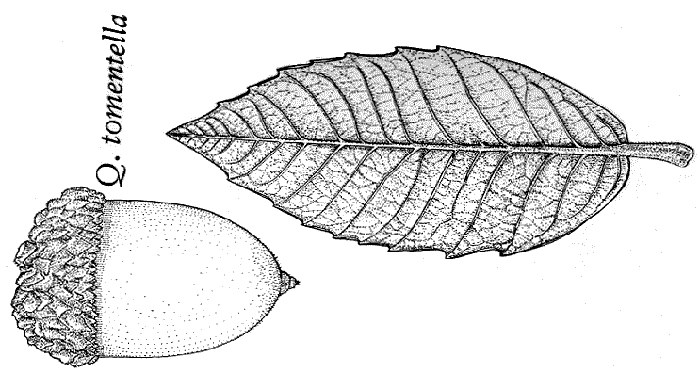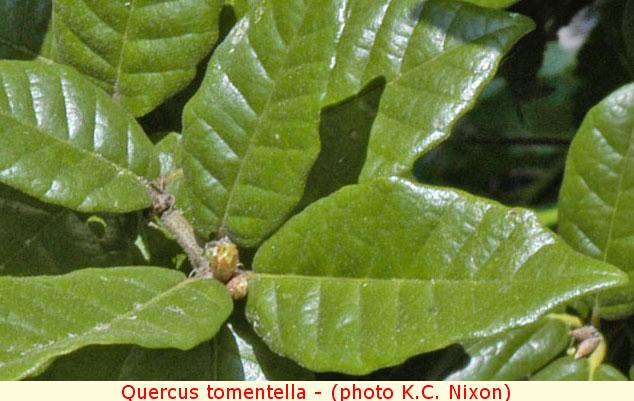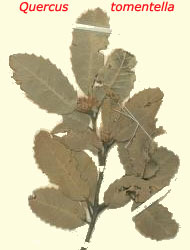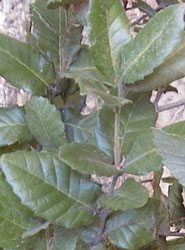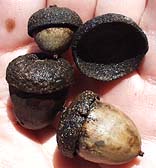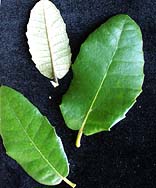| Quercus tomentella | |
| Author | Engelm. 1878 Trans. Acad. Sci. St. Louis 3: 393 |
| Synonyms | chrysolepis var. tomentella (Engelm.) E.Murray
1983 chrysolepis subsp tomentella (Engelm.) E.Murray 1983 tomentella var. conjungens Trel. 1924 |
| Local names | Island live oak ; Island oak ; |
| Range | California
Islands (Santa Rosa, Santa Cruz, Santa Catalina, Santa Clemente); Mexico
(Guadalupe Island); 100 to 900 m; |
| Growth habit | 6-12
m tall usually, but may reach 20 m, with trunk to 0.4-0.6 m in diameter;
crown rounded with spreading branches; |
| Leaves | 5-10
x 2.5-5 cm; evergreen; stiff; leathery; elliptic or ovate, sometimes slightly
oblong; apex pointed to attenuate; base obtuse to rounded, cordate or
not; margin slightly thickened, strongly revolute, cartilaginous, entire,
or crenate-dentate with 3-7 pairs of teeth; glossy dark green or yellowish
green above, hairless or with some scattered stalkless trichomes, mainly
at base of midvein; greyish, densely tomentose beneath (hence the specific
name), with scattered, sessile stellate hairs and simple ones along midvein;
8-12 conspicuous, parallel vein pairs, strongly impressed adaxially, raised
beneath; petiole 3-10 mm long, thick, flattened above, with rusty hairs;
|
| Flowers | in April-May; staminate flowers pubescent, on 5-8 cm long catkins; female inflorescences few-flowered; |
| Fruits | acorn
2.5-3 cm long; solitary or paired; apex rounded; cup sessile or with a
0.8-1.3 cm long peduncle, hairy inside and outside, with warty scales,
enclosing 1/3 to 1/2 of nut; maturing in 2 years from August to October; |
|
Bark, twigs and |
bark
reddish brown, thin, scaly, turning greyish, ridged; twigs hairy, red
brown, stiff; terminal bud conical, 7-10 mm long, with ciliate scales; |
| Hardiness zone, habitat | not
quite hardy (zone 8); all types of soils without limestone; |
| Miscellaneous |
--
A.Camus : n° 294; |
| Subspecies and varieties |
-- Hybrids with Q. chrysolepis,
hardy; |
| Pictures |
More pictures HERE
|
